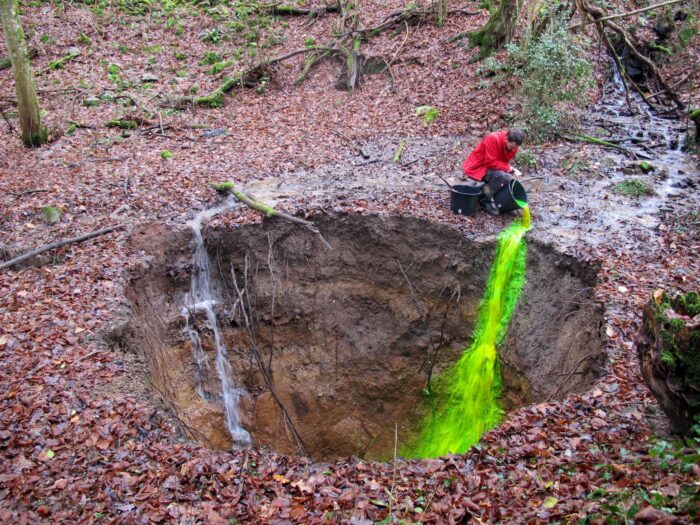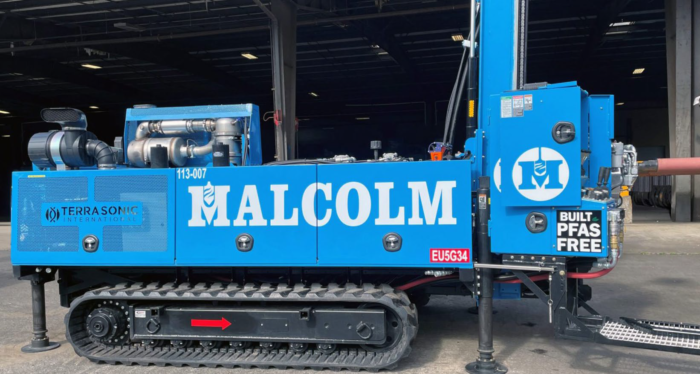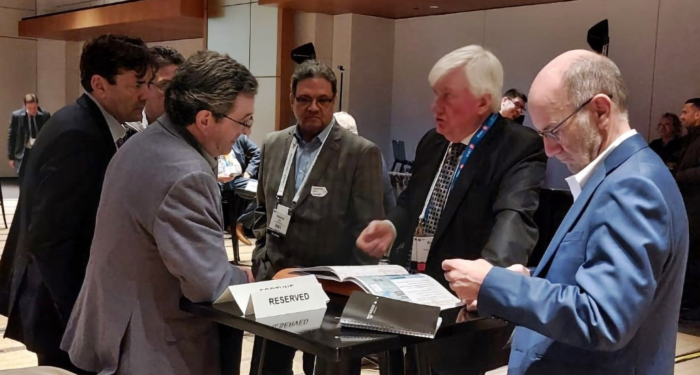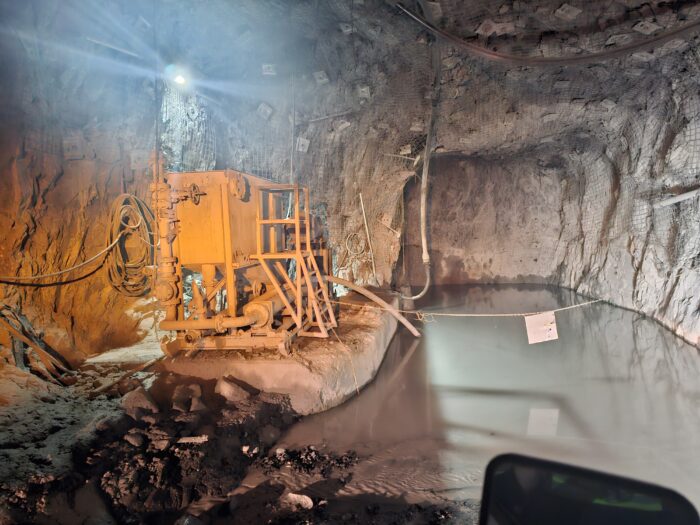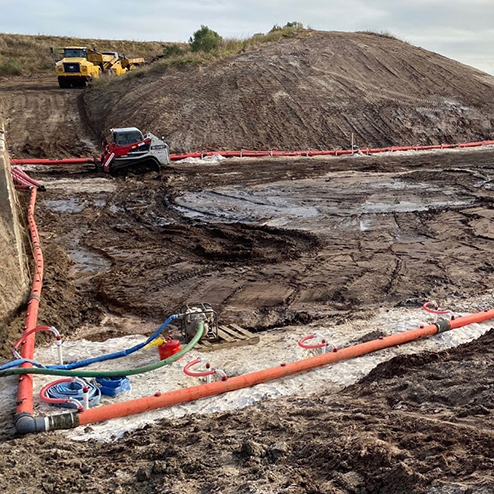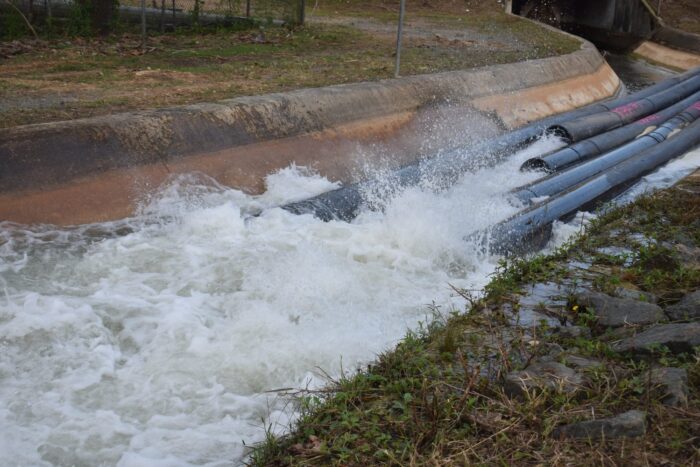Last August, we reached an important milestone in the construction of the new railway subway on the N631 in Rijen. A particularly large tunnel was pushed into place, eliminating the need for traffic to wait for passing trains. A crucial part of moving the leaden concrete structure with precision was lowering the groundwater level.
Conditions for placement had to be perfectly dry. We succeeded, and within five days, the nearly five million kilo tub was pushed into place millimeter by millimeter. A specialist project and thanks for all being part of this meticulous preparations and efforts of Henk van Tongeren Water & Techniek, Raaijmakers en Zn. Bronbemaling and Tjaden Adviesbureau before soil mechanics succeeded.
Watch the placement of the tunnel
Well-thought-out well drainage strategy
The construction of the new subway in Rijen is a joint project of the province of Brabant, ProRail and Heijmans. They involved Henk van Tongeren Watertechniek as a partner to create and execute the well drainage strategy. They developed a well-considered approach to carry out the source dewatering as efficiently and sustainably as possible and then guided their clients through the process during placement.
What did this look like?
– In the run-up to the project, we set up and carried out a pumping test to determine the specific flow rate. This allowed us to determine an accurate planning and execution for the pumping.
– During excavation and drainage work, you don’t want any surprises. Therefore, Tjaden Adviesbureau voor Grondmechanica carried out probing to map the site’s soil conditions and properties in detail.
– To protect nearby vulnerable properties and the forested area, we drilled dozens of return wells. This allowed us to filter the pumped-up water back into the soil a few metres away. We made sure we intervened as little as possible in the natural environment.
– We monitored the project 24/7 using several monitoring wells in the area. This allowed us to carefully monitor the process and adjust it if necessary.
– In our approach, we went for the most sustainable solutions and were able to carry out the work almost 100% electrically. From drilling to pumping.
As you can see, the most impressive part of this project for us goes beyond well drilling alone. Keeping the two construction pits dry, with a flow rate of about 50 m3 per hour per pit, this was an integral part of the entire construction process. A process that we successfully completed in close cooperation and which we were able to carry out with respect for the surrounding natural environment.
The result is a modern feat of engineering, with a 10-inch aqueduct spanning the road and preserving the wooded character of the surrounding area.
Combination of the following companies was commissioned to carry out the drainage.
www.bronbemaling.com
www.vantongeren.nl
www.raaijmakersbronbemaling.nl
www.tjadenadvies.nl





